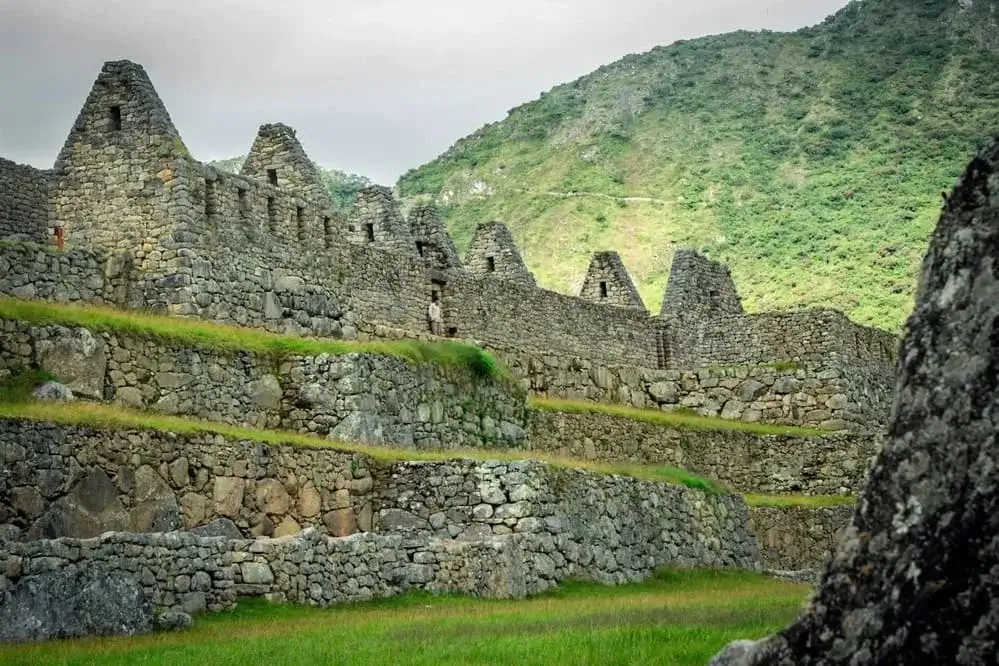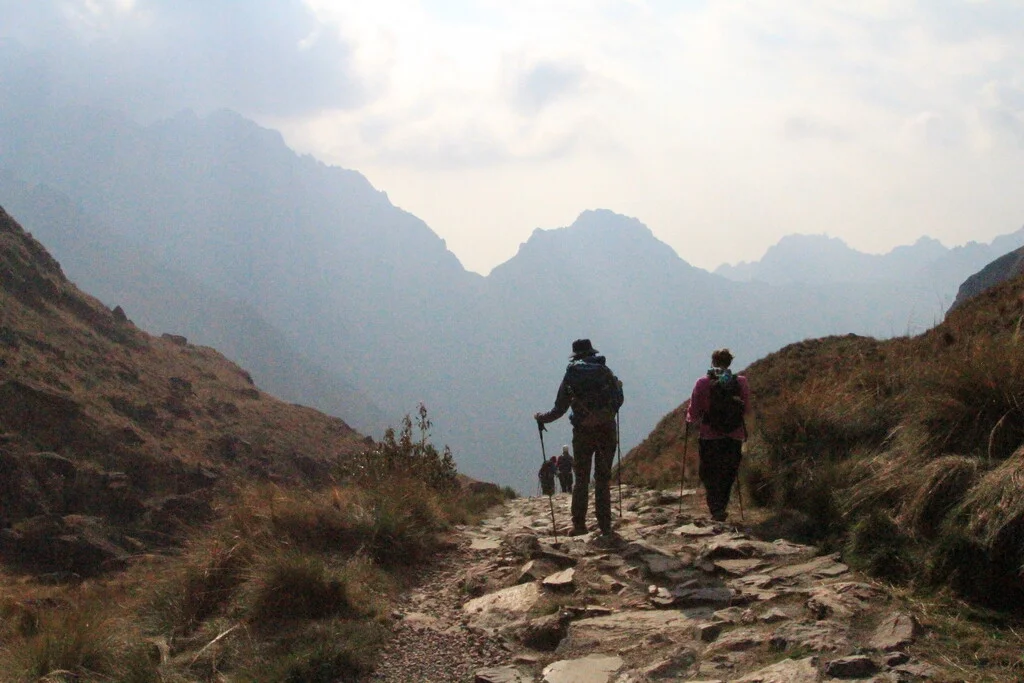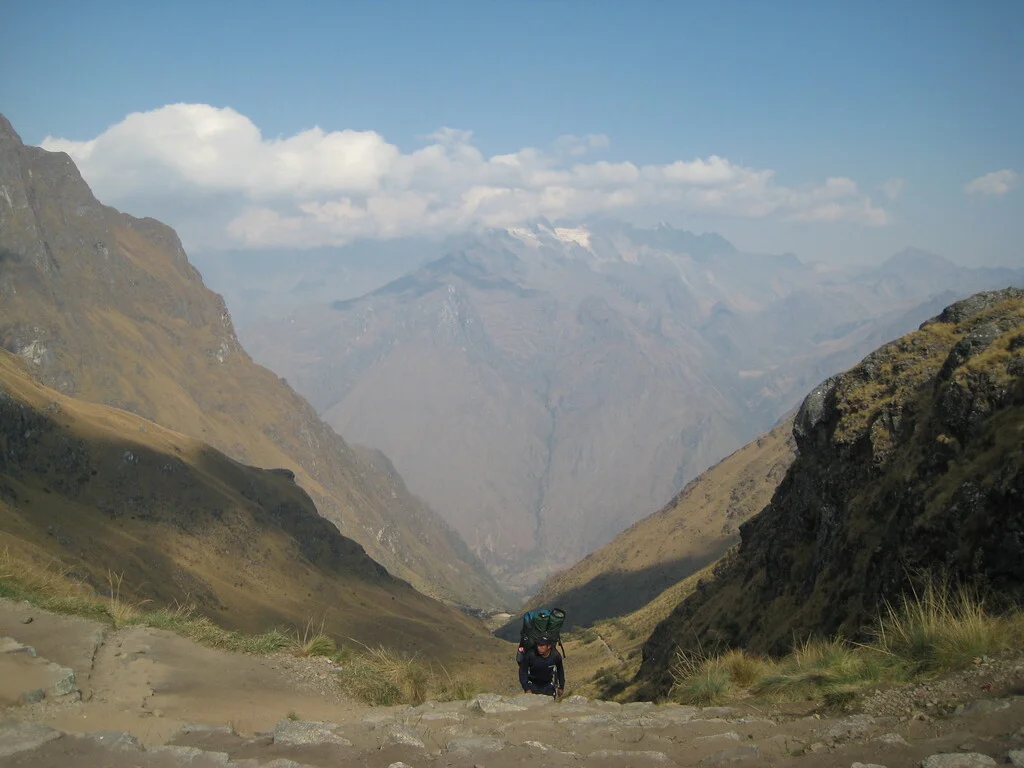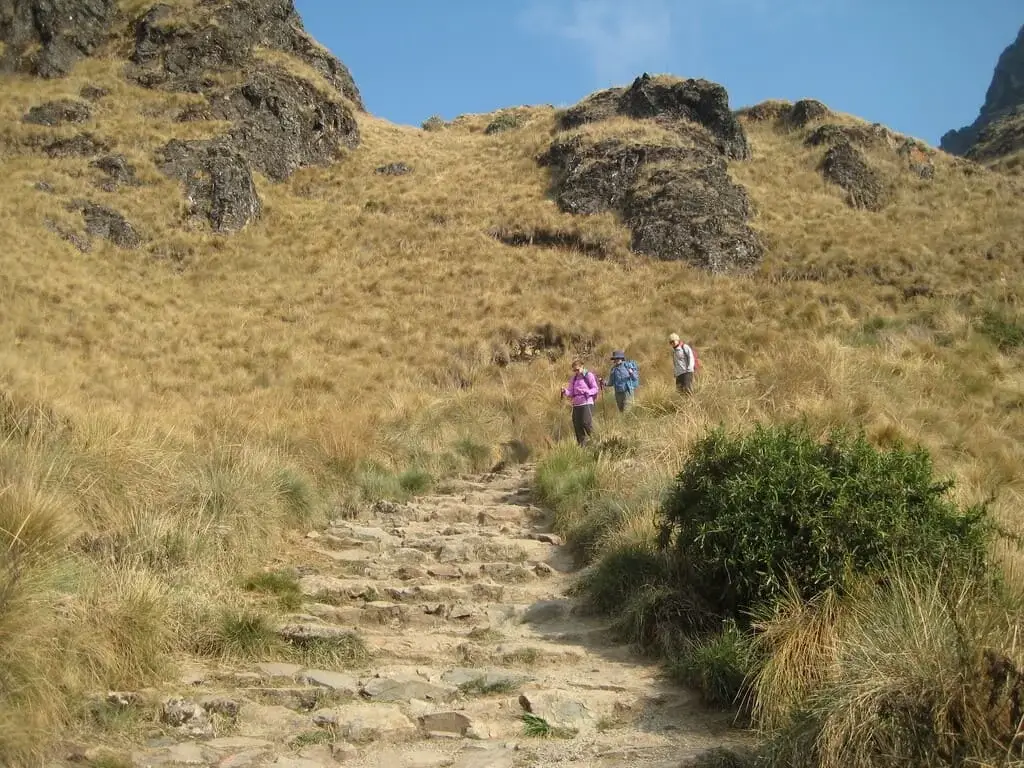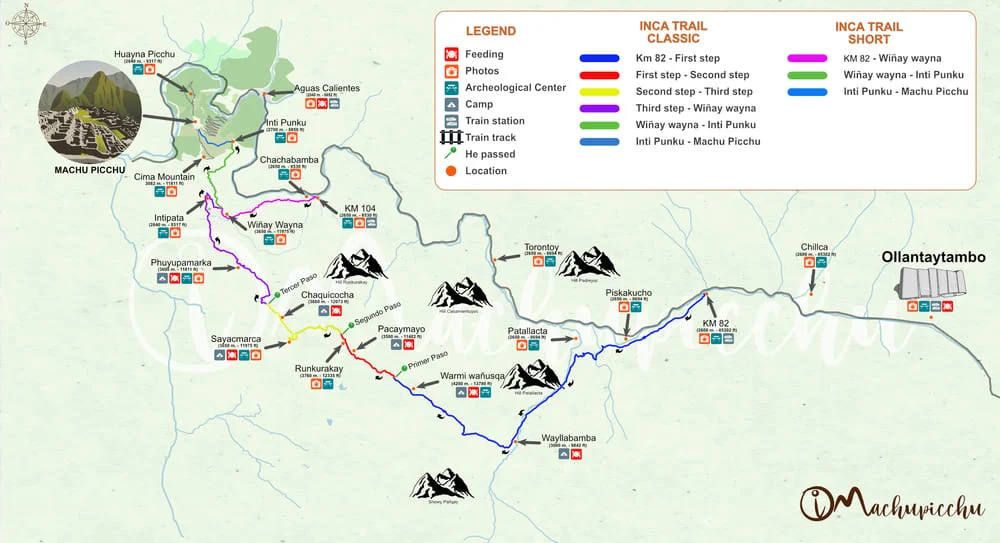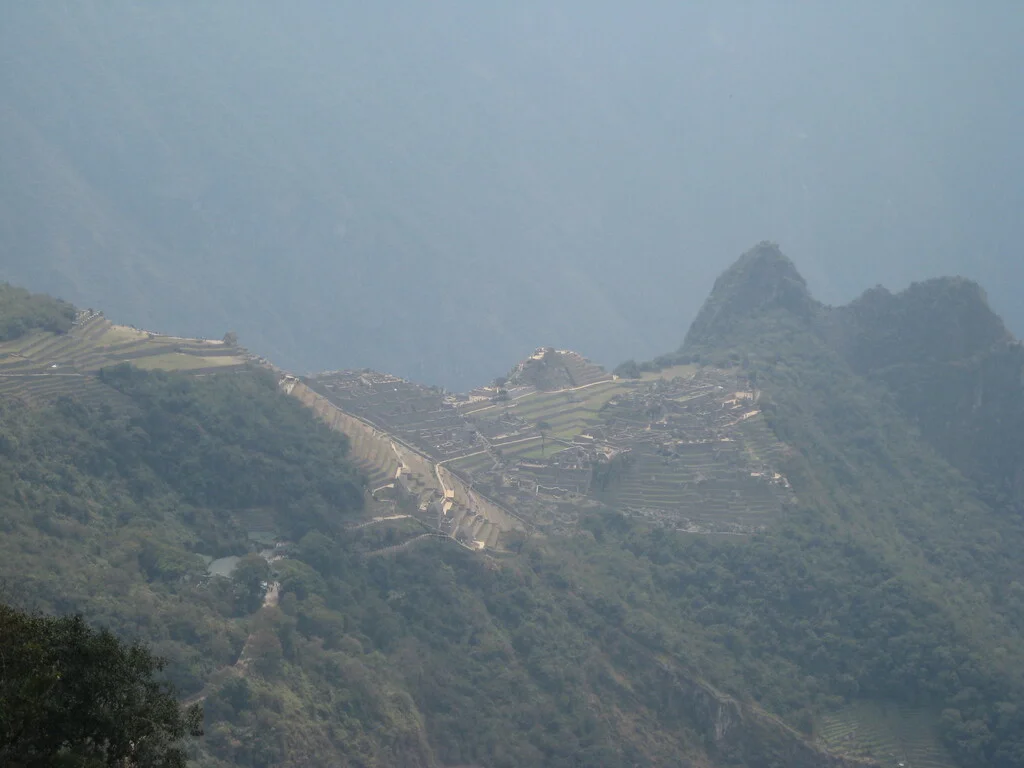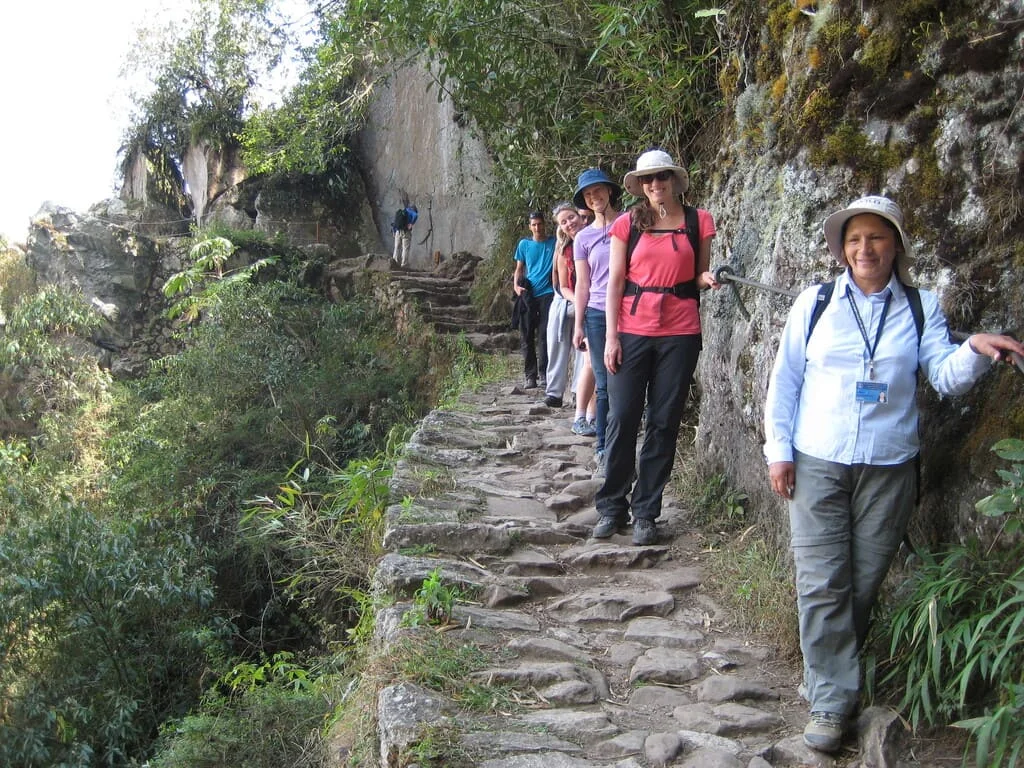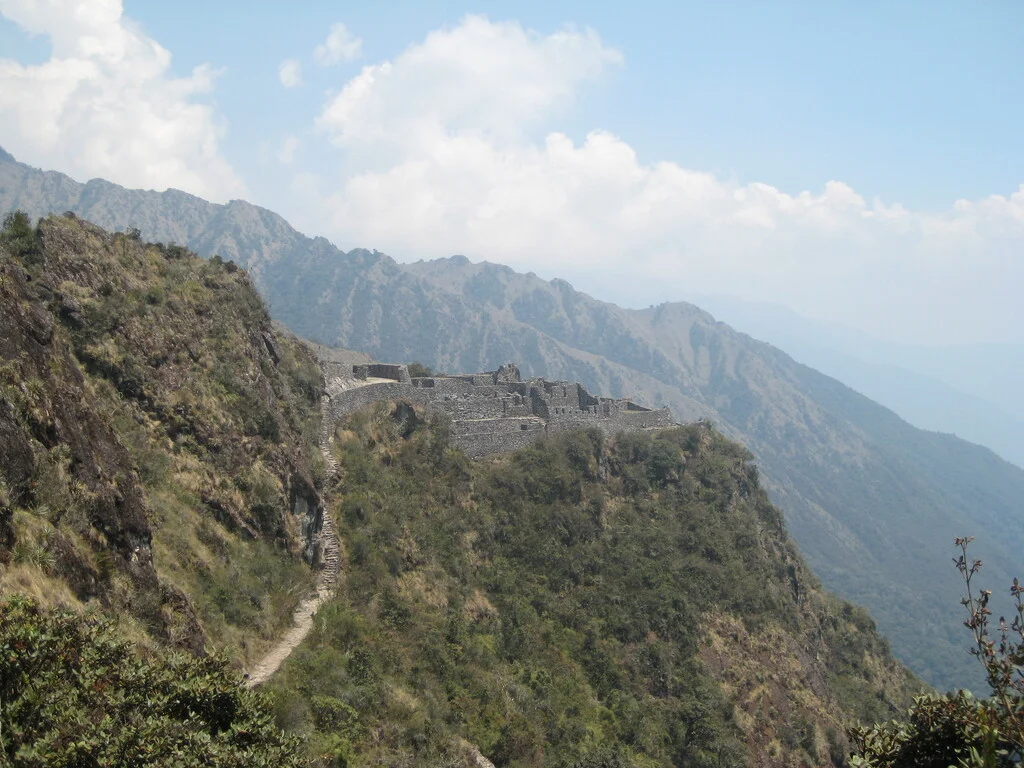The Inca Trail is more than just a hike it’s a journey through history, breathtaking landscapes, and unparalleled adventure. Connecting the ancient Incan city of Machu Picchu to the wider Andean network, this trail offers a once-in-a-lifetime experience for history buffs, nature lovers, and thrill-seekers alike. If you’ve ever dreamed of walking in the footsteps of the Incas, this comprehensive guide will help you plan your trip
What Is the Inca Trail?
The Incas established a system of prehistoric routes known as the Inca Trail to link their enormous empire. The 42-kilometer road that goes to Machu Picchu is currently the most well-known portion. This trail, which has been designated a UNESCO World Heritage Site, is well-known for its blend of scenic beauty, archeological sites, and the ultimate reward: reaching the Sun Gate (Inti Punku), which offers a stunning perspective of Machu Picchu.
Key Information for Planning
Permits and Regulations
Due to its popularity and the need for preservation, the Peruvian government restricts access to the Inca Trail. Only 500 permits are issued daily, including those for guides and support staff. Booking 6-8 months in advance is essential, especially for the peak season from May to August.
Best Time to Visit
The best months to hike are May through August, with clear skies and mild weather. The Inca trail is closed in February for maintenance and conservation efforts.
Take a look at our Machu Picchu Tours Here
Routes and Maps
Classic Inca Trail (4 Days)
Set out on the fabled Classic Inca Trail, a voyage that perfectly captures the spirit of adventure and antiquity. Explore a variety of stunning locations over the course of four days, including lush cloud forests teeming with unusual plants and animals as well as the striking high-altitude passes that provide expansive vistas of the Andes. Discover amazing Inca archeological sites along the journey, such the charming Wiñay Wayna, a tiered structure set on a mountainside encircled by lush flora.
The breathtaking conclusion, the Sun Gate (Inti Punku), where the magnificent Machu Picchu emerges in all its splendor, is closer with each step. For explorers and history buffs alike, this journey is a remarkable experience because it strikes the ideal balance between difficulty, beauty, and cultural immersion.
Short Inca Trail (1-2 Days)
The provides a shorter but no less enchanted experience for visitors with little time or looking for a less demanding choice. This route, which avoids the severe ascents and nevertheless immerses you in the beauties of the Andes, takes you along a section of the famous trail over the course of one or two days. Admire landmarks like as the picturesque Chachabamba ruins and the striking Wiñay Wayna, which features old stonework and tumbling terraces. The journey comes to a successful end at the Sun Gate, where you will see the fabled Machu Picchu for the first time.
Perfect for those who want to experience the allure of the Inca Trail without the commitment of a longer trek, this journey delivers history, culture, and natural beauty in a compact adventure.
Alternative Routes
- Salkantay Trek: A scenic high-altitude adventure.
- Lares Trek: A culturally immersive experience.
- Choquequirao Trek: A remote and less-traveled path. Read more about the Choquequirao Trek here.
Trail Lengths
Classic Inca Trail:
- The 42-kilometer (about 26-mile) is usually finished in four days.
- Hiking ranges from 6 to 12 kilometers (3.5 to 7.5 miles) every day, with some days being more taxing due to the rough terrain and elevation.
Hikers may immerse themselves in the region's natural beauty and old Incan culture by traversing a variety of terrain on this famous journey, which includes high-altitude passes and cloud forests. A difficult climb to the Sun Gate leads to the trail's final goal, Machu Picchu, which features a number of important archaeological sites. Trekkers can relax and acclimate as they proceed along the route thanks to the trip's moderate rise and well-organized campsites.
Read our blog about all you need to know about the inca trail
Short Inca Trail:
- Short Inca Trail is usually finished in one to two days and stretches 10 to 12 kilometers (6 to 7.5 miles).
Bypassing some of the more strenuous climbs, this shortened version of the Classic Inca Trail offers a more leisurely pace while still giving access to important Incan locations like Chachabamba and Wiñay Wayna. Hikers get their first look at the spectacular Machu Picchu at the Sun Gate, which marks the end of the Short Inca Trail. Even though this trail is shorter, it nevertheless provides a memorable experience and is ideal for people who are short on time or who would rather take a less demanding route.
Physical Demands
Although most hikers can reach both pathways, the Classic Inca Trail in particular does demand a good level of physical fitness. Even seasoned hikers may find the terrain difficult due to its rough routes, steep inclines, and height gains. Acclimatization is necessary to prevent altitude sickness at high elevations (up to 4,200 meters or 13,800 feet on the Classic Inca Trail). In order to acclimate to the elevation, trekkers are advised to arrive in Cusco or the surrounding areas two to three days prior to the trip. To help with stamina and endurance during the hike, fitness preparation is also advised, including strength and cardiovascular conditioning.
Despite being easier, the Short Inca Trail nevertheless calls for a moderate level of fitness because it has some steep and rough parts. A more pleasant and pleasurable trek is guaranteed if you take the time to physically prepare and acclimate, regardless of whether you choose the Classic or Short version.
What to Expect
Scenery
Get ready to be mesmerized by some of the most magnificent scenery on the planet as you embark on the Inca Trail. Tall snow-capped peaks watch over lush valleys below as the journey progresses through a striking natural tapestry. A mysterious ambiance will be created as you travel through foggy cloud woods, with their dense foliage shrouded in a veil of fog.
With verdant hillsides, swift-moving rivers, and expansive vistas that go on forever, the constantly shifting landscape will engross you in the splendor of the Andes. Every step will feel like a voyage through a living picture as you take in the breathtaking views along the way, whether you're hiking through foggy woodlands or fields bathed in sunlight.
Cultural Landmarks
In addition to being physically demanding, the Inca Trail offers a rich historical experience. Ancient Incan ruins such as Phuyupatamarca, or "Town in the Clouds," which is situated at an astounding height with breathtaking views of the surrounding mountains, are important stops along the trip. With its finely built terraces and elaborate stonework, this ceremonial monument showcases the Inca civilization's sophisticated architecture and spirituality. Runkurakay, a little but important Inca ruin that was originally a rest area for hikers on the old trail, is another must-see.
As you explore these sacred landmarks, you'll uncover the mysteries of the Inca Empire, from their architectural prowess to their deep connection to the land and the heavens. Each stone, each structure, tells a story that has stood the test of time for centuries.
Wildlife
Keep your eyes out as you continue into the Andean forest since this area is home to a variety of species. A unique opportunity to see exotic birds, such as beautiful hummingbirds, majestic Andean condors soaring high above the peaks, and groups of colorful parrots darting through the trees, is provided by the Inca Trail. The delicate and exquisite flowers of orchids lend a touch of charm to the surrounding verdant woodland. However, the trail is home to numerous uncommon and elusive creatures in addition to the birds and plants.
If you're lucky, you might even encounter the spectacled bear, a rare and isolated Andean species, or you might observe the footprints of wild animals like the Andean fox or puma. The route is not just a trip through history but also a trek through a living, breathing refuge of biodiversity because of the region's varied ecosystems, which create a rich tapestry of life.
Practical Tips
Here is a list of Tips for your Inca Trail Trip, if you want a more detailed guide with tips and insides on the trek read our full blog.
Packing List
To ensure a safe and comfortable trek, pack smart with these essentials:
- Sturdy Hiking Boots: Ensure they are broken in to prevent blisters.
- Layered Clothing: Temperatures can vary greatly, so bring moisture-wicking base layers, warm mid-layers, and a lightweight jacket for wind and cold.
- Rain Gear: A waterproof rain jacket or poncho is a must, as weather in the Andes can be unpredictable.
- Backpack: Opt for a durable, comfortable backpack with a rain cover. A daypack for personal items is also recommended.
- Other Essentials: Include a hat, gloves, sunscreen, insect repellent, a reusable water bottle or hydration system, snacks, a flashlight or headlamp, and a small first-aid kit.
Guided vs. Unguided Tours
- Guided Tours: For the Classic Inca Trail, hiring a licensed tour operator is mandatory due to government regulations. Guides not only provide logistical support and ensure compliance with rules but also enrich the journey by sharing knowledge about Inca history, culture, and the natural environment.
- Unguided Options: If you’re considering an alternative trek, some routes allow for unguided exploration. However, guided tours are highly recommended for safety and to gain a deeper understanding of the region.
Accommodations
- Classic Inca Trail: Your tour operator will set up campsites in advance. Camping is the standard option. A lot of companies offer meals, sleeping mats, and tents.
- Alternative Treks: Lodges or eco-friendly lodgings with contemporary conveniences like hot showers, cozy mattresses, and even spa services may be available for treks like the Salkantay or Lares treks. This enables you to still enjoy the splendor of the Andes while trekking in more luxury.
Additional Tips
- Permits: Book your trek months in advance, especially for the Classic Inca Trail, as permits are limited and sell out quickly.
- Acclimatization: Spend at least 2–3 days in Cusco or a similar high-altitude area before starting your trek to minimize the risk of altitude sickness.
- Fitness Preparation: The Inca Trail can be physically demanding. Train with hikes and cardio workouts to build stamina and prepare for the altitude.
- Respect the Environment: Follow Leave No Trace principles by packing out all trash and respecting wildlife and archaeological sites.
Sustainable Tourism
In addition to being a magnificent tour of nature and history, the Inca Trail is a delicate ecosystem that needs to be preserved. In order to preserve this famous path for upcoming generations, sustainable tourism is essential. You can support conservation initiatives in a number of ways as a conscientious traveler:
Leave No Trace Principles
Adhering to Leave No Trace (LNT) principles is essential for minimizing your environmental footprint. These principles encourage travelers to:
- Pack Out What You Pack In: To keep the route clean, bring all of your waste, even biodegradable things, with you.
- Respect wildlife by not feeding or disturbing it. Always observe from a distance and take care not to disturb their natural habitat.
- Remain on Designated Trails: To stop erosion and save delicate ecosystems, stay on designated trails.
- Take Care of Water: To maintain the cleanliness of water sources, use biodegradable soap and refrain from bathing in rivers and streams or washing dishes in them.
- Respect Cultural Heritage: Avoid touching or climbing on old buildings when you visit archeological sites as this may result in permanent harm.
Supporting Eco-Friendly Operators
One of the best ways to support the preservation of the Inca Trail is to use tour companies that place a high priority on sustainability. To cut down on trash, several operators use eco-friendly techniques including offering reusable water bottles, biodegradable soaps, and sustainable camping supplies. Additionally, they place a strong emphasis on helping local communities by employing local porters and guides and purchasing food ingredients locally, all of which boost the local economy.
While some contribute a portion of their earnings to conservation initiatives or work with nearby communities to preserve the Inca Trail and its environs, others take part in carbon offset schemes to reduce the environmental impact of operations and transportation.
Respecting Local Communities
- Fair Wages and Ethical Treatment: Ensure the operators you choose treat their staff, including porters and guides, with fairness and respect. Some operators offer better wages, insurance, and working conditions, which is crucial for maintaining a healthy and fair tourism ecosystem.
- Cultural Sensitivity: Respect the traditions and customs of the local communities along the trail. Engage with them in a manner that is mindful of their culture and heritage.
The Inca Trail is a journey like no other. Its combination of history, natural beauty, and cultural significance makes it an unforgettable adventure. Ready to start your journey? Let Andean Travel Agency help you create the perfect itinerary. Book your trip today and take the first step toward an adventure of a lifetime.

